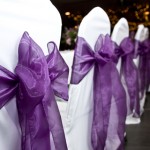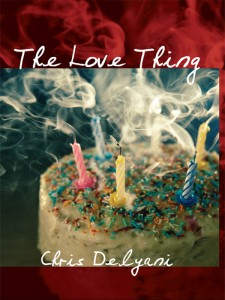THE LSAT
I have never taken the Law School Admissions Test, or LSAT, not even for fun. But I’m reasonably confident I wouldn’t score anywhere near the 167 that Greg manages to achieve under pressure from his father (p. 13). (For the record, my own father, who died in 2005, was an electrician, and he never, ever pressured me to go to law school.)
OAKLAND, VACATION DESTINATION
When Tommy puts down the City of Oakland by saying, “It’s like what that writer said, ‘There is no there there,’” (p. 85), he manages to insult not only Oakland but also “that writer” Gertrude Stein, who  wrote her famous phrase to lament her lost childhood and not to dismiss Oakland as a cultural backwater. Tommy’s opinion of Oakland used to be my own, that is, until I moved here in 2000 and found my attitude changing. In Chapter Fourteen, “Exquisite Thrill,” Lisa looks forward to hiking in the Oakland hills, most likely Tilden State Park or Sibley Volcanic State Park. Later on, Greg’s ex-boyfriend Matthew speaks admiringly of Lake Merritt (check out my friend Laura Sutta’s photographs).
wrote her famous phrase to lament her lost childhood and not to dismiss Oakland as a cultural backwater. Tommy’s opinion of Oakland used to be my own, that is, until I moved here in 2000 and found my attitude changing. In Chapter Fourteen, “Exquisite Thrill,” Lisa looks forward to hiking in the Oakland hills, most likely Tilden State Park or Sibley Volcanic State Park. Later on, Greg’s ex-boyfriend Matthew speaks admiringly of Lake Merritt (check out my friend Laura Sutta’s photographs).
CARNIVOROUS FISH
 I have never fed a live goldfish to a pike cichlid, but I’m sure the experience would give me the sort of nightmares Tommy describes during the party scene in Chapter Eight, “Playing Stupid” (p. 92). Having the Disney castle as the main ornament in the aquarium might seem a little kitschy for a character such as William Crawley, the aquarium’s tasteful owner, but I couldn’t resist the sound of the word “Neuschwanstein.”
I have never fed a live goldfish to a pike cichlid, but I’m sure the experience would give me the sort of nightmares Tommy describes during the party scene in Chapter Eight, “Playing Stupid” (p. 92). Having the Disney castle as the main ornament in the aquarium might seem a little kitschy for a character such as William Crawley, the aquarium’s tasteful owner, but I couldn’t resist the sound of the word “Neuschwanstein.”
THE PARROTS OF TELEGRAPH HILL
When I first wrote the scene in which David Swift points out San Francisco’s flock of wild green parrots to Greg (p. 141), I thought the parrots were a phenomenon of the 1990s, not realizing they’d been hanging around the city for at least a decade longer than the sea lions at Pier 39. The birds are today the subject of their very own feature film, demonstrating that there is drama in the air as well as on the ground.
Greg (p. 141), I thought the parrots were a phenomenon of the 1990s, not realizing they’d been hanging around the city for at least a decade longer than the sea lions at Pier 39. The birds are today the subject of their very own feature film, demonstrating that there is drama in the air as well as on the ground.
SWEET FIFTEEN: THE QUINCEAÑERA
 At a dinner party a friend of ours mentioned how his beloved elderly cat would soon be turning fifteen years old, and my partner (now my husband) Dan joked that maybe the cat’s birthday should be celebrated with a quinceañera, the Latino coming out party for teenage girls. A reviewer on The Next Big Writer website told me she’d attended quinceañeras before, but never a quinceañera for a cat, or a quinceañera that featured Midori margaritas.
At a dinner party a friend of ours mentioned how his beloved elderly cat would soon be turning fifteen years old, and my partner (now my husband) Dan joked that maybe the cat’s birthday should be celebrated with a quinceañera, the Latino coming out party for teenage girls. A reviewer on The Next Big Writer website told me she’d attended quinceañeras before, but never a quinceañera for a cat, or a quinceañera that featured Midori margaritas.
FAMOUS ART
I couldn’t help letting my weakness for art show in a couple of places in “The Love Thing.” In Chapter Six, “Corporate Family,” Greg notices a print of Frederick Childe Hassam’s “Boston Common At Twilight” on the office wall of his boss, Joe Scheiner. Joe’s opinion of the painting—“I like to have it up there to remind me of the snow I left behind” (p. 58)—is probably not the reaction Hassam had in mind when he first set out to create his masterpiece. More notably, Greg receives a postcard of Ernst Ludwig Kirchner’s “Dresden Street” from his stepmother in Chapter Sixteen, “Family Plan” (p. 180). I didn’t intend to attach a special meaning to this particular work, though readers might be tempted to wonder if perhaps Greg’s stepmother identifies with the two staring women in the foreground, goading Greg to do the right thing.
(p. 58)—is probably not the reaction Hassam had in mind when he first set out to create his masterpiece. More notably, Greg receives a postcard of Ernst Ludwig Kirchner’s “Dresden Street” from his stepmother in Chapter Sixteen, “Family Plan” (p. 180). I didn’t intend to attach a special meaning to this particular work, though readers might be tempted to wonder if perhaps Greg’s stepmother identifies with the two staring women in the foreground, goading Greg to do the right thing.
THE DESIGNATED HITTER
I grew up in a family of rabid Boston Red Sox fans, who indoctrinated me with the notion that the American League’s designated hitter rule, which relieves the pitcher from having to bat, is the superior way to play major league baseball. Then I moved to San Francisco, where the National League’s San Francisco Giants hold sway, and whose fans (my husband among them) give equally cogent reasons why the DH is a waste and the pitcher should bat like any other player. In “The Love Thing,” Greg’s dad, a strong-willed lawyer, is a fierce partisan of the DH rule (p. 265), while Andrew Kirk, another strong-willed lawyer, speaks up for the pitcher (p. 376). So who’s right? Me, I’m staying out of it.
“WHO THE HELL ARE YOU”
The wedding that takes place in the novel’s final chapter is based on a real-life wedding reception, one of the most spontaneous and enjoyable I’ve ever been to, although the drag queen’s performance of Madison Avenue’s 2000 dance hit “Who The Hell Are You” (p. 373) is fictional. I suppose I could have chosen a more well-known song, but I couldn’t resist the appropriateness of the song’s message to close out the novel as well as the lead singer’s icy, androgynous Russian-empress look.








